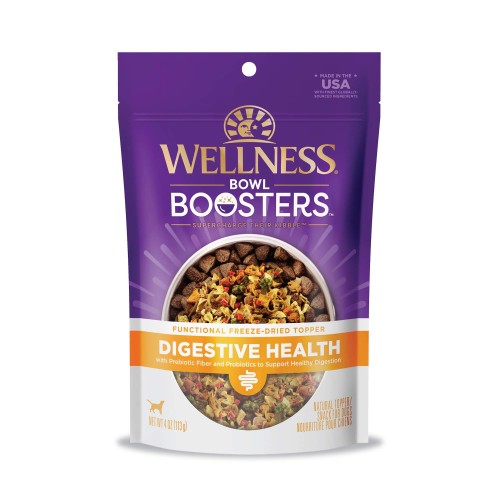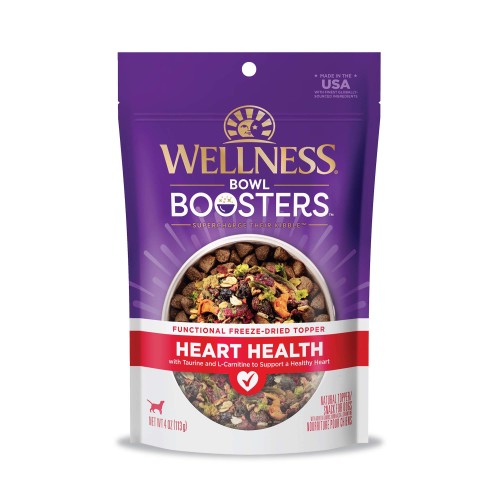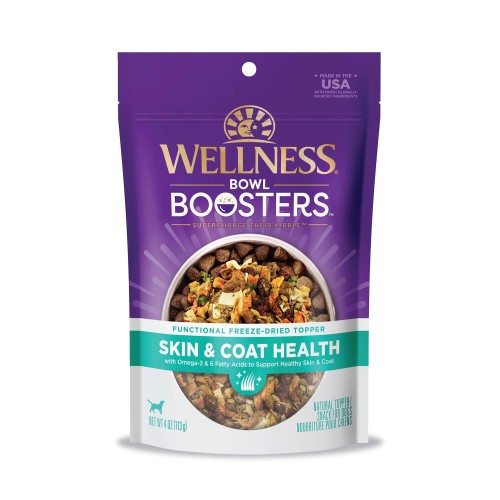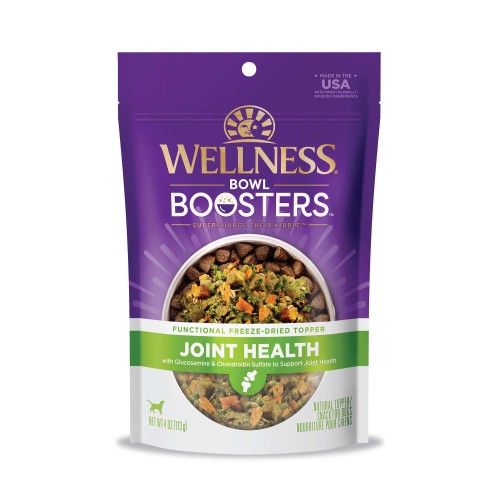January 17, 2025
Refreshing Your Pet’s Diet: New Year’s Resolutions for Healthier Eating
Our pets can benefit from a fresh start that comes with a new year, too. Whether your dog is a food enthusiast, or your cat is a picky eater, setting resolutions and adopting healthier habits can profoundly impact their overall health and happiness.
Here are 9 playful yet practical ways to help build a nutritious and delicious diet! Plus, one bonus option that you might not have considered before.
1. Upgrade Their Food: Quality Over Quantity
This one is a game-changer. It’s easy to think that all pet foods are the same, but the truth is, that many commercial pet foods come packed with fillers, preservatives, and low-quality ingredients. If your pet’s diet relies on the same kibble (or canned food) for years, it might be time for an upgrade.
Resolution: Switch to high-quality, nutrient-dense food. Look for foods with real meat as the first ingredient and minimal fillers like corn or soy. You don’t have to go gourmet overnight, but small steps toward better nutrition can have long-lasting benefits.
Tip: You can research and ask your vet about the best diet for dogs and cats, including grain-free dog foods, high-protein cat food, or digestive health dog food. Many pet food brands also offer tailored diets based on your pet’s age, size, and specific health needs.
2. Add Some Variety with Fresh Ingredients
No one likes eating the same thing every day, including your pet! Adding fresh ingredients to your dog or cat’s meals can build a healthy pet diet and make mealtime more exciting.
Resolution: Incorporate safe fruits, veggies, and lean proteins into your pet’s meals. For example, add small bits of cooked chicken, carrots, or blueberries to your pet’s regular food. Not only do these add flavor, but they provide extra vitamins and antioxidants that can boost your pet’s health. Check out Wellness® Bowl Boosters® for a variety of toppers and mixers that are easy to serve over your pet’s daily kibble!
Tip: Research which fruits and veggies are safe for your pet while watching out for common dog food allergies. For instance, dogs can enjoy apples (without seeds), carrots, and pumpkin, while cats can benefit from small amounts of cooked squash or peas. Avoid toxic foods like grapes, onions, and garlic!
3. Practice Portion Control: Keep Those Extra Pounds in Check
We’ve all been guilty of giving our pets an extra treat here and there. It’s hard to resist those big puppy eyes or that adorably demanding meow. But overfeeding can lead to obesity, which can cause a host of health problems, from joint issues to diabetes.
Resolution: Stick to the recommended portion sizes and avoid overindulging with treats. If your pet loves treats (who doesn’t?), talk to your vet about weight reduction cat food or good dog food for weight loss, or adjust their daily food intake to compensate for the extra snacks.
Tip: Invest in a kitchen scale or use a measuring cup to portion your pet’s food. Feed them multiple smaller meals throughout the day instead of one large serving, which can help regulate their metabolism and prevent overeating. For more tips, here’s a blog post on 10 Ways To Achieve The Best Diet For Indoor Cats.
4. Treat Time: Go Healthy (and Creative!)
Treats are an important part of bonding with your pet, but they can also be a source of unhealthy ingredients if you’re not careful. Instead of loading up on processed treats try homemade dog treats or cat snacks. The general rule of thumb is that treats should make up no more than 10% of a dog’s daily caloric intake.
Resolution: Get creative with homemade pet treats! You don’t have to be a chef to whip up something tasty. There are plenty of easy recipes for dog biscuits, frozen treats, and cat-friendly snacks made with wholesome ingredients.
Tip: You can make pet-safe treats like pumpkin and peanut butter dog biscuits or frozen yogurt treats. Not only will your pet love the variety, but you’ll feel good knowing exactly what’s in their snacks.
5. Hydration is Key: Fresh Water All Day, Every Day
We often focus on food, but let’s not forget the importance of water. Pets need proper hydration to keep their bodies functioning smoothly. Dehydration can lead to kidney problems, digestive issues, and lethargy, so ensure your pet drinks enough water daily.
Resolution: Make fresh water available to your pet at all times. You can also add wet food to their diet (great for cats in particular, who are less likely to drink enough water on their own). Consider investing in a pet water fountain, as many pets prefer running water, which can encourage them to drink more.
Tip: If your pet hesitates to drink water, splash some low-sodium chicken broth into their bowl or rotate soft food for dogs with their regular meals. Some pets also enjoy drinking from a shallow dish or a special water bowl.
6. Consider Special Diets for Specific Needs
As pets age—or have certain health issues—their dietary needs can change. It’s always a good idea to check in with your vet and reassess whether your pet might benefit from switching dog food. For example, older dogs may need joint support, while pets with sensitive stomachs might require a gentler formula.
Resolution: Evaluate whether your pet’s needs are being met. Is your senior dog getting enough joint support? Is your cat’s sensitive stomach getting the attention it requires? A tailored diet can increase energy levels, help with weight management, and improve overall health.
Tip: Many brands offer foods for specific life stages (puppy, adult, senior) or health concerns (allergies, digestion, weight control). Consult your vet to determine the best diet for dogs and the healthiest diet for cats
7. Slow Down Mealtime: Mindful Eating for Your Pet
Does your dog scarf down their food in seconds, leaving them bloated or gassy? Or maybe your cat barely touches their bowl and leaves you wondering if they’re getting enough to eat. Closely monitor your pet’s eating pace because overeating and under-eating can cause issues.
Resolution: Encourage mindful eating for your pet. For fast eaters, try a slow-feeder bowl to prevent gulping. Picky eaters might benefit from different textures or feeding styles, like puzzle-feeders or mealtime-enrichment toys.
Tip: If your pet tends to rush through meals, consider spreading their food on a tray or using a puzzle feeder. Cats might enjoy their food in different ways too—try a variety of feeding methods, such as placing food in different areas of the house or using a food dispenser to help them eat at a slower pace
8. Consult the Experts: Regular Vet Checkups
No matter how much we love to spoil our pets with good food, we can’t replace the advice of a professional. A trip to the vet is an essential part of maintaining your pet’s health, and that includes keeping tabs on their diet.
Resolution: Schedule a routine vet checkup at least once a year and bring up any dietary concerns. This is a great time to review your pet’s diet, dental health, and overall wellbeing and discuss any changes that might benefit them.
Tip: If your pet is experiencing health issues like weight gain, lethargy, or digestive problems, don’t hesitate to ask your vet for specific dietary recommendations. They may suggest supplements, different food types, or feeding schedules tailored to your pet’s needs.
9. Be Patient: Change Takes Time
Remember, changing your pet’s diet is a gradual process. Whether introducing new foods, adjusting portions, or switching to the best dog food for elderly dogs, be patient. Sudden changes can upset your pet’s stomach. Introduce new foods slowly and give your pet time to adjust.
Resolution: Start small and make changes over a few weeks, not overnight. Monitor your pet’s response and ensure they’re adjusting well. You may notice a healthy pet diet leading to better energy levels, shinier coats, or even improvements in their behavior.
BONUS: Protect Their Health with Pet Insurance
While diet and nutrition are crucial for your pet’s well-being, accidents, illnesses, or unexpected health issues can still arise, no matter how carefully you care for them. That’s where pet insurance comes in as an essential safety net, helping reduce the financial burden of unexpected vet bills.
Resolution: Consider investing in pet insurance to protect your pet’s health. With the right coverage, you can ensure your furry friend gets the care they need without worrying about costly veterinary expenses. From emergencies to routine check-ups, pet insurance can offer peace of mind.
Tip #1: Look for policies for accidents, illnesses, and preventative care like vaccinations and wellness exams. Be sure to compare different plans to find one that suits your pet’s needs. The earlier you enroll for pet insurance (ideally while they’re young and healthy), the more affordable the premiums are for your budget. Plus, many policies have a waiting period before certain conditions are covered.
By combining a healthier diet with the security of pet insurance, you can feel confident knowing you’re giving your pet the best care possible—now and in the future!
Wrapping It Up
The new year is the perfect opportunity to evaluate your pet’s diet and make positive changes. By focusing on high-quality food, portion control, hydration, and incorporating healthy treats, you can set your furry friend up for a year of vitality and happiness. Remember, your pet’s health is an ongoing journey, and small tweaks to their diet can make a huge difference in how they feel and behave.
Here’s to a year of tail wags, purring contentment, and healthier eating! 🐾





